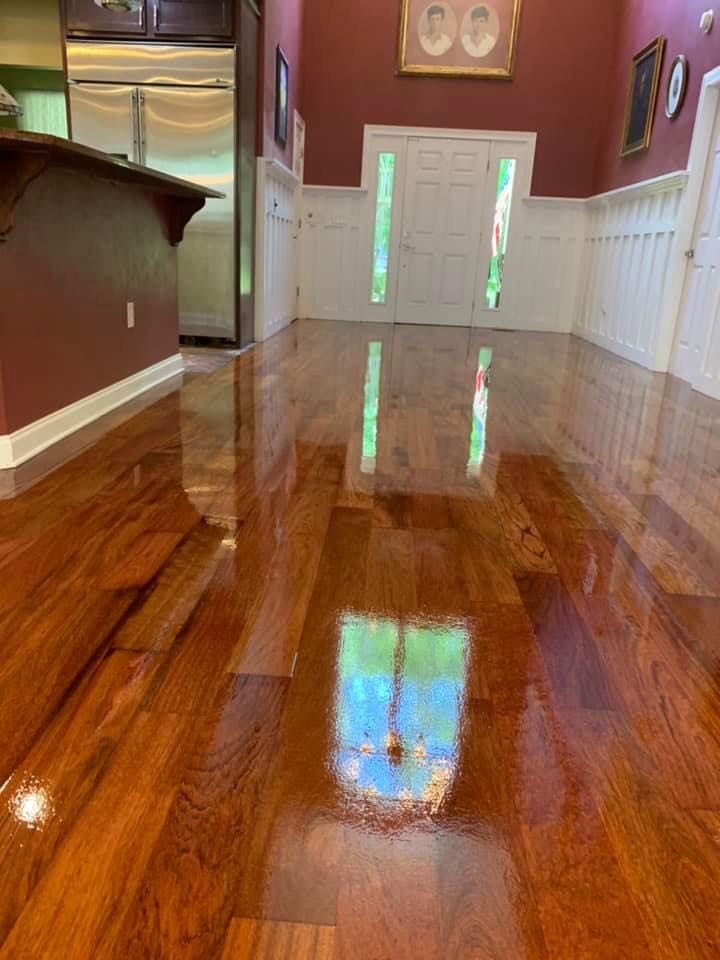In Cincinnati, we get it all—hot, muggy summers and cold, dry winters. While this keeps things interesting outside, it can wreak havoc on your hardwood floors inside. Many homeowners are surprised to learn that humidity is one of the biggest threats to hardwood flooring.
Let’s break down how seasonal humidity impacts your floors, the telltale signs of damage like gapping and cupping, and how to prevent these issues with proper installation and care.
Why Humidity Matters for Hardwood Floors
Hardwood is a natural material, which means it expands and contracts as moisture levels in the air change. While this movement is completely normal, too much humidity fluctuation can lead to serious damage over time.
In summer: High humidity causes wood planks to absorb moisture and expand.
In winter: Dry air pulls moisture out of the wood, causing it to shrink.
This seasonal push and pull can result in:
-
Gapping – Spaces appear between planks during dry seasons.
-
Cupping – The edges of the planks rise higher than the center during humid months.
-
Buckling – Extreme expansion can lift the floorboards entirely.
Signs Your Hardwood Floor Is Reacting to Humidity
If you’ve noticed your floors looking uneven or feeling a little different underfoot, Cincinnati’s seasonal humidity may be to blame. Look for these common symptoms:
-
Gaps that appear and disappear with the seasons
-
Boards that feel bouncy or hollow
-
Cupped planks that form a “wavy” surface
-
Squeaky or shifting boards in high-traffic areas
Pro Tip: Even high-end hardwood can suffer from humidity-related issues if it’s not installed and maintained properly.
How to Prevent Humidity Damage to Hardwood Floors
The good news? You can protect your investment with a few smart steps—especially when you work with experienced professionals like Gramer Flooring.
1. Professional Acclimation Before Installation
Before we install your hardwood, we let the planks acclimate to your home’s indoor humidity. This step allows the wood to adjust to the environment, reducing the chance of future expansion or contraction.
- We store the flooring in your home for several days before installation.
- We check the moisture content of both the wood and the subfloor.
- We use specialized tools to measure relative humidity inside your home.
Many flooring issues start before the first plank is even nailed down. That’s why professional installation is key.
2. Control Indoor Humidity Year-Round
To keep your floors stable, aim for a consistent indoor humidity level between 35–55%.
Here’s how to manage humidity in your Cincinnati home:
-
Use a humidifier during dry winter months.
-
Run a dehumidifier or air conditioning during humid summers.
-
Avoid letting water or condensation sit on your floor.
-
Keep houseplants in moderation—some release moisture into the air.
3. Choose the Right Hardwood for Ohio’s Climate
Some wood species handle humidity changes better than others.
-
Oak and Hickory are more stable choices.
-
Maple and Beech are more prone to movement.
-
Engineered hardwood is a great alternative in moisture-prone rooms.
Not sure what to choose? Let us help you pick the perfect flooring based on your style, budget, and home conditions.
Don’t Let Cincinnati’s Weather Wreck Your Floors
Hardwood flooring is one of the best investments you can make in your home—but only if it’s installed correctly and maintained with care. At Gramer Flooring, we take the extra steps to acclimate, install, and seal your floors the right way, so they last for decades.
Call the Cincinnati Hardwood Experts
Call us today at 859-663-7678
Request a free quote online
Visit us on Google Maps to read reviews from happy Cincinnati homeowners
Whether you’re installing new floors or trying to rescue existing ones from seasonal damage, Gramer Flooring has the local experience you can trust. Let’s protect your floors—and your investment—starting today.
